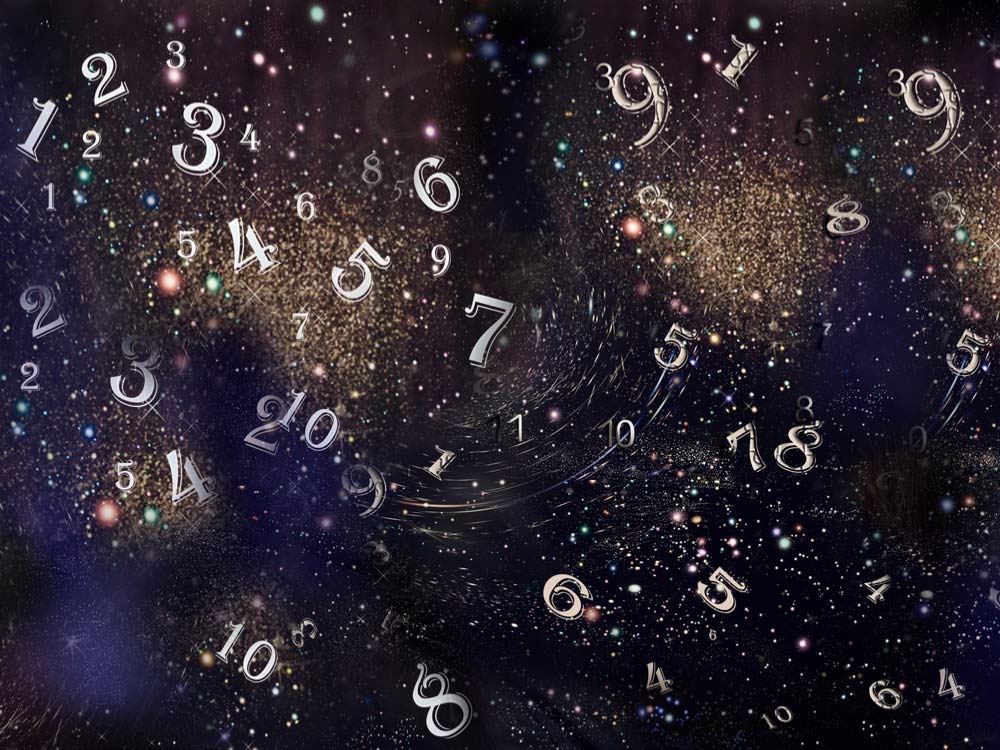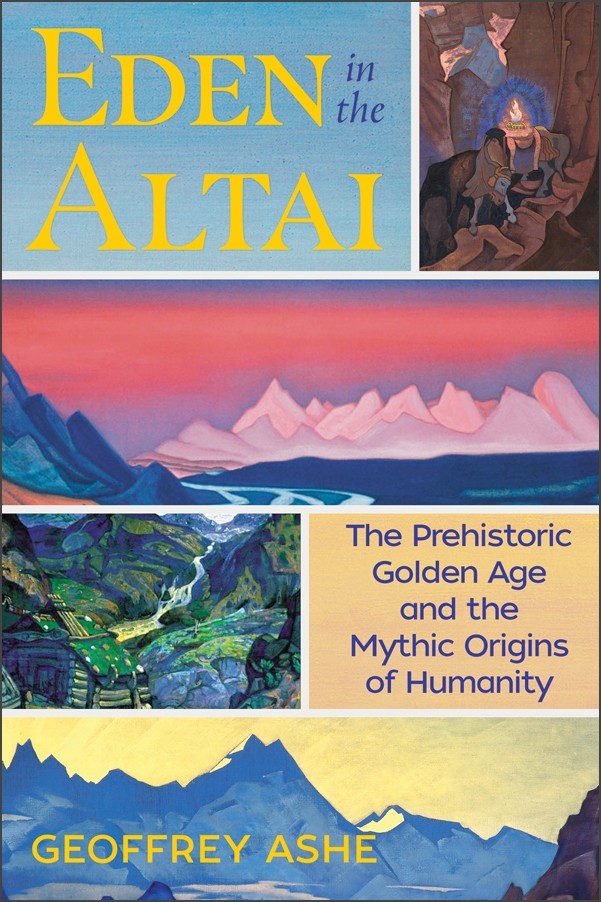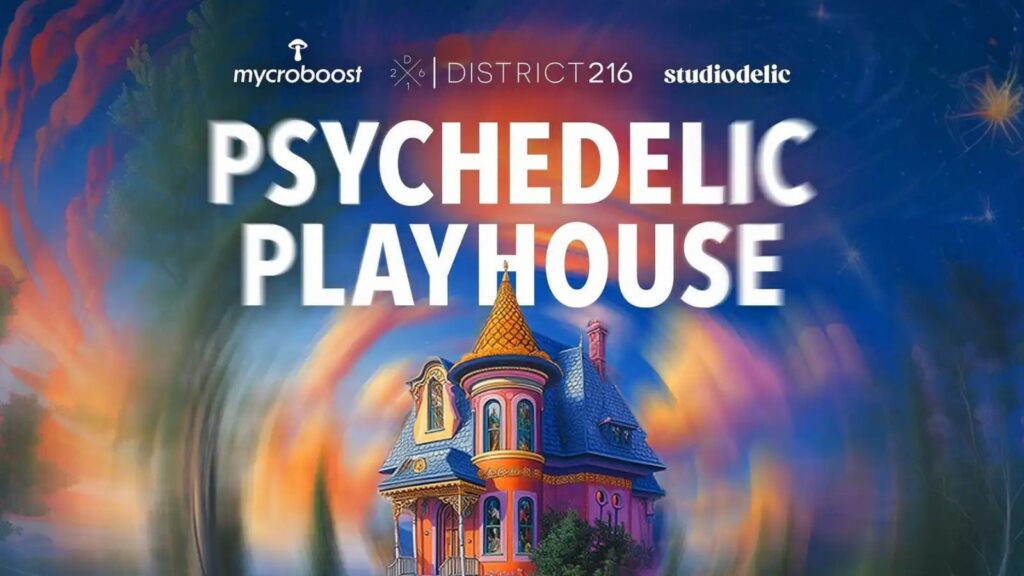The following is excerpted from Eden of Altai by Geoffrey Ashe, published by Inner Traditions.
With the seven mystique surfacing among shamans and Indo-Aryans and perhaps beginning to show itself beyond, we face a phenomenon that is still part of our world and our thinking, for no obvious reason. It is absurdly easy to dash off a list of sevens—the seven-day week, the seven wonders of the world, the seven seas, the seven deadly sins, the seven sleepers. It even appears in show business—The Seven Samurai, The Magnificent Seven, Seven Brides for Seven Brothers. Why seven?
Between the societies thus far considered and the modern West, the gap of time and space is enormous. Surprisingly, perhaps, (Mircea) Eliade may be prepared to help bridge it. He makes a magisterial statement: “It is probable that the shamanic ideology has played a part in the dissemination of the number 7.” On Eliade’s authority, this is a serious inquiry and not a fantasy. Hampered, however, by his preconceptions as to who influenced whom (or who could have influenced whom), he fails to trace the course of the dissemination. Here we have defined a first step, from shamans to Indo-Aryans, and maybe glimpsed a further step in Mesopotamia. But two issues must be tackled.
First, the notion of bridging gaps may simply be misguided. While particular sevens, like Ursa Major, may have passed from culture to culture in particular myths, it may be a mistake to try following the seven mystique further via dissemination—direct or indirect—from a source. A penchant for sets of seven may be just a universal quirk of human psychology.
Second, even if the mystique does exhibit cause and effect, even if it does reveal influence from the northern seedbed, it may not be significant anyhow. From this viewpoint, likewise, it may be no more than a quirk, not a clue that justifies regarding the seedbed as a source for elements of civilization, a home of Ancient Wisdom in however embryonic a form.
At this point it would be premature to try tackling the second issue. Answers can emerge only as exploration proceeds. It seems clear that the seven mystique, in the cases that have come to light so far, is part of a bundle of motifs and not an oddity to be studied in isolation. But the first issue is the immediate one.
A worldwide survey gives the subject an interest that is seldom appreciated. Psychological quirks can, on the face of it, be forgotten. The mystique is not universal. It is culturally formed and, in its early phases, restricted. Even among Indo-Europeans, those who had it—the Indo-Aryans—were an untypical minority. With Indo-Europeans in general the sacred or magical number was three, a fact that the anthropologist Georges Dumezil relates to a tripartite division of society, though there is certainly more to it than that.
Outside the territories considered already, the seven mystique is confined anciently to a single region, a heartland—the Middle East, plus Greece just alongside.* There we first encounter some of the major instances, such as a week of seven days and an astrology reckoning seven “planets”—the sun, the moon, Mercury, Venus, Mars, Jupiter, Saturn. Also a musical scale with seven notes. Normal as it sounds, it has nothing inevitable about it. Admittedly, its length is fixed by a physical fact. If you go up from C, the next C is a note with twice the vibration rate. But the seven steps on the way, C D E F G A B, are products of an aural conditioning that may have begun among the early instrument makers of Mesopotamia. The scale in Indian music, with its Indo-Aryan ancestry, does have seven notes, but the Chinese scale has only five, C D E G A.3
*“Middle East” means the portion of Asia extending from Turkey and the Mediterranean coastline to Iran, inclusive. Those who use the phrase sometimes add Egypt. I do not. The term Near East was coined when the Turkish empire covered much of the region and most of the Balkans. Some authors still use it, now more or less synonymously with “Middle East.”
The seven mystique’s currency across Europe is later and due very largely to Christianity bringing a Bible written in the heartland that teems with consecrated sevens, from the seven days of creation onward. Before the impact of outside influences there are no clear traces of the mystique in China, or Egypt, or the rest of Africa, or Australia, or the Americas. Scattered, undatable heptads occur in magic and ritual, among the Shilluk of the Sudan, for instance, and the Navaho. These are never part of a system and have no air of significance.
China is conclusive as to the limitation, because traditional Chinese thinking not only attached no special value to seven, it did attach value to another number. That was five. Besides their five-note scale, the Chinese recognized five planets, namely the true ones visible before telescopes—Mercury, Venus, Mars, Jupiter, Saturn. These were matched with five elements—water, metal, fire, wood, and earth. And there are five directions—north, west, south, east, and center. Chinese astrology assesses a person under five aspects—life, body, power, fortune, intelligence. The five notes of the Chinese scale are paired with planets and elements. The Chinese rainbow has five colors and there are five social duties.
The motif extends to Tibetan Buddhism, which acknowledges five sovereign beings, Dhyani Buddhas, ruling over five epochs.6 From the Dhyani Buddhas there emanate the five colors, elements, senses, and vowels. Even Hinduism—the mature Hinduism of the subcontinent—has five elements. They are ether, air, fire, water, and earth. These are matched with five senses—hearing, touch, sight, taste, smell.
We can mark off China and eliminate the seven mystique there as being no part of its cultural heritage. Tibet is not quite so clear-cut. In the Indian systems known as Tantric the human organism is said to have seven centers or chakras, one above another from the base of the spine to the crown of the head, and Tibetan Buddhism has Tantric overtones, with techniques for activating one’s chakras. It has a few other sevens as well. Lamas regard life as a progression through seven cycles on each of seven planes of experience. In Tibetan verse the most sacred meter has seven-syllable lines (an equivalent in English: “We wandered down the Broad Walk”). A Tibetan legend tells how, when the Buddha was born, he rose at once and took seven paces toward each cardinal compass point. These details never challenge the cosmic ascendancy of five. In its attitude toward numbers, however, Tibet may be a borderland, in the Chinese orbit but affected a little from a region or population with the seven mystique. Mallory may have given the answer here by suggesting that the Buddhists who spoke Tocharian, an Indo-European language of Chinese Turkestan, were descended from the Afanasievo people in the Altai.
In the seven mystique we apparently have something that is formed culturally and is a product of regional influence rather than society in general, or psychology in general. By way of corroboration, a crucial fact is that a special regard for seven does not “come naturally”; it doesn’t “just happen.” Quite the reverse. One of the oddest features of the mystique is the contrast between seven’s persistence where it does occur and its awkwardness. It acts against the grain.
The magic three of the Celts and other peoples has a plain logic, whether or not Dumezil’s social reason is valid. It appeals as neat and complete. It conjures up a triangle, the simplest enclosure; it evokes the whole of space (length, breadth, height) and the whole of time (past, present, future); it sums up the entirety of a thing or event (beginning, middle, end). Freud gave it a physical basis in the male genitalia. The basis of the Chinese five certainly is physical—it corresponds to the fingers. But seven cannot be explained thus. Those who argue otherwise have been driven to such expedients as citing seven features of the head—eyes, ears, nostrils, mouth—or seven orifices of the body. They have never explained why people whose counting is based on the obvious finger tally should have built so much on an obscure alternative count. In practice, would anybody think of two nostrils rather than one nose?
A seven mystique is not merely without foundation in the human makeup, it is, as it were, actively alien. Not only is it confined to certain societies, it is such an unlikely thing for any society to adopt that an explanation is needed. Seven does not correlate with visual perception or mental capacity. Two, three, four, five objects can be taken in as a group without counting. Six is marginal. Beyond six, the objects are not perceived at a glance and have to be counted, unless they form a known pattern, like pips on a playing card. Seven is the first number that is not plausible as a standard group. It is just too big to be handled or remembered easily. As a frivolous yet telling instance, Walt Disney made Snow White and the Seven Dwarfs in 1937, and in spite of the film’s success and staying power, few of the public ever found it easy to name all of the dwarfs offhand. Many could get to five or six, but nearly everybody missed at least one.
Numerologists may not be considered very important, but for what it is worth, no reason can be shown why they should have found seven attractive. It does not lend itself to the kind of thinking that regards six as a “perfect” number because its divisors, one, two, and three, add up to itself. Seven is a prime number and has no divisors to play with. It is uncooperative. There is no test for divisibility by it. There are tests for the other numbers up to twelve, but the only way to see whether seven will go into a larger number is to try.
One notion is that seven is special because it is three plus four and combines magical qualities that both of the smaller numbers are held to possess. Three, of course, has mythical and folkloric prominence, not only among Celts. There are three Fates, Furies, Graces. Parents in fairy tales have three sons, heroes get three wishes, heroines have three suitors, and so on. A list of triads would extend far backward in time and over an immense territory. In such cases, however, it is doubtful whether three is thought of as a number, exactly, open to arithmetical handling. Rather, as remarked, the feeling is that it stands for a whole. A triad has an air of being complete in itself. It may be a three-in-one, a divine power or entity (Fate, for example) with a triple aspect. Nobody would have made such a triad up to seven by adding four more members; nobody would have endowed Cerberus with four more heads.
Moreover, why four? Where would that have come from? In any relevant past, four has no similar magic. It eventually acquired that, in the broader number mysticism that grew up in Greece with genuine mathematics. But that came only with Pythagoras and his disciples in the sixth century B.C., and there were mystical sevens long before Pythagoras.
True, a few heptads of later times are thought of as three and four added together. Medieval schools taught the seven liberal arts. These comprised the trivium of grammar, logic, and rhetoric and the –quadrivium of astronomy, music, geometry, and arithmetic. But the older and more significant sets are not so comprised. The week is not three plus four. The astrological planets are not three plus four. The musical scale is not three plus four. Where the seven mystique can be pinned down earliest, there is little trace of a prior mystique of any smaller numbers; sevens appear without preexisting threes and fours to add together.
Those who accept the theories of C. G. Jung may urge his “archetypes” as an explanation. They are said to be patterns embedded in a collective unconscious that all human beings share. Some are numerical and inspire such groupings as the Three Fates. Jung claims that four is archetypal as well as three, so he may seem to offer ammunition for the seven-equals-three-plus-four theory. Who knows, this piece of mental arithmetic, which is so hard to catch happening in historical daylight, might have been worked out in the collective unconscious. But while three does have an archetypal look, Jung’s case for four is much weaker. It depends, to be frank, on the limitations of his own knowledge.
He talks about four directions corresponding to points of the compass, and about four winds, and four seasons, et cetera, as if all peoples had four and there were some deep-rooted necessity in it. The simple truth is that it is not so. His fours are neither worldwide nor very ancient. The Greeks did not define the four cardinal points until about the fifth century B.C., and in other parts of the world, even where these are recognized, it does not follow that there are four directions. In ancient Ireland and India there were five directions, north, south, east, west, and “here.” The Chinese usually counted five directions, sometimes six. In some Polynesian islands they reckon seven—north, south, east, west, here, up, and down. Four has no magic in this matter.
The four winds, north, south, east, west, are rationalized survivors of a larger, vaguer, more primitive brood. They do not appear in the Bible until Jer. 49:36 (“And upon Elam will I bring the four winds from the four quarters of heaven. . . .”), and that passage is much later than others that emphasize seven. A Babylonian text, the creation epic Enuma elish (“When on high”), mentions four winds as a set but also mentions seven winds as a set. Seven is already there; it is not a sum of three and four.
With the seasons the notion of a four archetype collapses completely. Across the world, the number of seasons ranges from two (tropical South America) to nine (the Shilluk). The Indo-European languages have no common word for autumn. The Greeks, who can be documented, started with three seasons. In the seventh century B.C., their year sometimes was divided into four but sometimes into three. Classical Greek is a three-season language, its word for “autumn” meaning “the after-summer.” Theophrastus, a scientific writer, actually divides the year into five.
Seven cannot be made up of an archetypal three and four if the archetypal four is invalid.
***
















